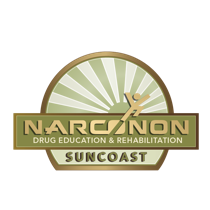What is a Schedule I Drug? Or a Schedule II Drug;
And Why is it Important to Know?
The program at the Suncoast Rehabilitation Center is designed to help people through addiction to any drug. It may be obvious that some drugs are more abused than others, some are illegal while others are not.
So, where can one find out about how likely it is that a drug is abused and if the drug itself is legal or not? How can this be important?
In 1970, the US government developed a classification system to categorize all drugs in terms of their legality, their inclination to be abused, their medicinal value/use, etc. These various categories are called “schedules”. The purpose of this article is to simply explain the different categories, or schedules, so that the subject can be easily understood.
Schedule I drugs:
These drugs cannot be prescribed by a doctor. They are illegal drugs. These have a high potential for abuse. Furthermore, they have no current accepted medical use in the US, along with no acceptable safety for use under medical supervision.
Drugs categorized as schedule I drugs are street drugs like heroin, LSD, Ecstasy, magic mushrooms, GHB, marijuana, and more.
Schedule II drugs:
These drugs can only prescribed by a doctor. These drugs can also be addictive. Drugs in this category have a high potential for abuse and can lead to severe psychological or physical dependence. To recap, these drugs are not illegal when sold with a prescription (as long as that prescription belongs to you and you are taking them as directed). Remember though – even though these drugs are considered legal drugs, they are likely to be abused and become addictive.
Some of these drugs are: Methadone, Oxycodone, Oxycontin, Percocet, Fentanyl, Sublimaze, Morphine, Opium, Codeine, Amphetamine, Adderall, Methamphetamine, Ritalin, and more.
Schedule III drugs:
These drugs can only be prescribed by a doctor. These drugs have a lower potential for abuse than substances listed in Schedule I and Schedule II, and the abuse has the possibility of leading to some physical dependence – or an intense psychological dependence.
Drugs in this category are: Vicodine, Codeine with Tylenol, Suboxone, Didrex, Ketamine, Anabolic Steroids, etc.
Schedule IV drugs:
These drugs can only be prescribed by a doctor. They tend to cause less abuse than the above schedules.
Some of these substances are: Xanax, Soma, Clonazepam, Klonopin, Tranxene, Valium, Diazepam, Ativan, Versed, Rohypnol, Restoril, Halcion, and more.
Schedule V drugs:
These drugs can be purchased over the counter, but sometimes a prescription is needed. They are considered to have a lower potential for abuse than schedule IV drugs.
Some drugs in this category are: Robitussin AC, some cough medicines containing Codeine, Propylhexedrine, Pyrovalerone, Ezogabine (an anti-convulsant), and more.
Why is it important to define the five categories that the US puts drugs in? Understanding how addictive each drug is, and how it can affect you and those around you helps a person make a decision about their own health, and about the drugs they are taking – prescribed or otherwise. Additionally, when one does more research, you can find how addictive certain doses of a drug like opium is, and how other drugs like Tylenol enhance all factors of this drug – how addictive it is, the damage it can do to the body, and how much stronger it can make the opiate. We have done a couple articles on this, click here to see one of these articles.
If you are abusing any of these drugs and don’t know how to stop, contact us today. We can help you through the process of removing the drug from your system with our drug-free program. Contact us today at 877-850-7355.
Refs: DEA, Drugs.com
